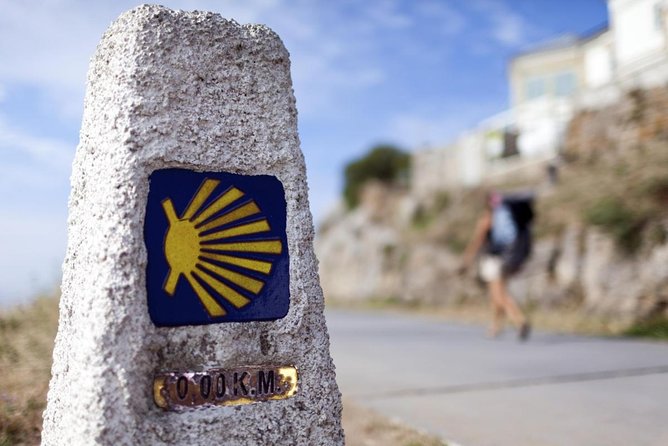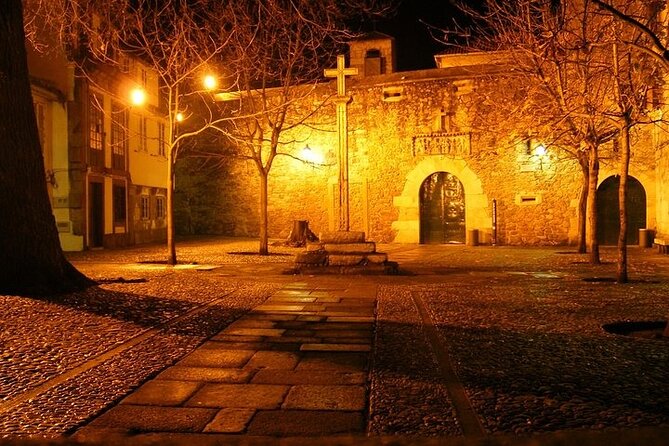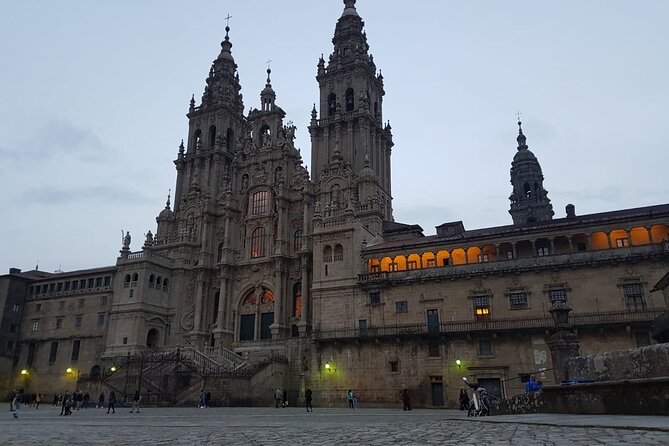The Camino de Santiago is a centuries-old pilgrimage route steeped in history and legend. At the heart of this captivating journey lies the profound influence of the Templars, a legendary order of knights whose devotion and protective spirit forever shaped the pilgrimage’s mystique. From establishing hospices and safeguarding routes to infusing the path with tales of valor, the Templars’ enduring legacy continues to captivate those who seek to uncover the deeper spiritual significance of this transformative experience. Explore the intriguing interplay between the Templars and the Camino, and discover how their timeless connection continues to resonate with modern-day travelers.
Key Points

- The Camino de Santiago traces its origins back to the 9th century, sparked by the discovery of St. James’ remains and a surge in Christian pilgrimage.
- The Knights Templar played a crucial role in protecting and supporting pilgrims on the Camino, establishing a network of hospices and serving as armed escorts.
- The architectural landscape along the Camino was influenced by the Templars, featuring Romanesque-style churches and hospices that provided shelter and respite for travelers.
- Centuries-old traditions, such as carrying a scallop shell, encountering fellow pilgrims, and reaching the cathedral in Santiago de Compostela, shape the profound spiritual significance of the Camino.
- The Camino de Santiago is steeped in legends and symbolic elements, including the scallop shell and stories of St. James and the Templar knights, which captivate and transform pilgrims on their journey.
Origins of the Camino De Santiago

The origins of the Camino de Santiago, also known as the Way of St. James, can be traced back to the 9th century when the remains of the apostle St. James were said to have been discovered in Galicia, Spain.
This discovery sparked a surge of Christian pilgrimage to the site, which became one of the most important destinations for spiritual seekers in medieval Europe.
Over the centuries, the Camino de Santiago has evolved into a network of routes traversing the Iberian Peninsula, each with its own unique history and cultural significance.
Today, the pilgrimage continues to attract travelers from around the world, drawn to the rich tapestry of legends, architecture, and spirituality woven into the fabric of this iconic journey.
You can also read our reviews of more tours and experiences in Santiago de Compostela.
Role of the Templars

An important role played by the Knights Templar in the history of the Camino de Santiago was their involvement in protecting and supporting pilgrims during their arduous journey.
The Templars established a network of hospices and outposts along the pilgrimage routes, providing food, shelter, and medical assistance to weary travelers. They also served as armed escorts, guarding pilgrims against bandits and other threats.
The Templars’ dedication and commitment to the safety and well-being of pilgrims on the Camino earned them a reputation for piety and charitable work, further enhancing the religious significance of the pilgrimage.
Their impact on the Camino de Santiago was profound and enduring.
Architectural Highlights
Beyond their role in safeguarding pilgrims, the Templars also left an indelible mark on the architectural landscape of the Camino de Santiago.
Along the ancient pilgrimage route, travelers can still admire the Templar churches and hospices built to provide shelter and respite.
Many of these structures feature the order’s distinctive Romanesque style, characterized by thick stone walls, rounded arches, and simple yet elegant ornamentation.
The Templar architectural legacy can be seen in sites like the Church of Santa María la Real in Villafranca del Bierzo and the Hospital de los Templarios in Ponferrada, both striking examples of the order’s devotion to both faith and functionality.
Pilgrimage Traditions
Centuries-old pilgrimage traditions have long been intertwined with the Camino de Santiago, shaping the experiences of countless travelers who’ve journeyed along its historic routes.
Whether it’s:
- Carrying a scallop shell, the symbol of the pilgrimage, as a badge of honor.
- Encountering fellow pilgrims from around the world, united in their quest for spiritual fulfillment.
- Reaching the iconic cathedral in Santiago de Compostela, a profound moment of solace and reflection.
These timeless rituals imbue the Camino with a profound sense of reverence and meaning, inviting pilgrims to connect with the rich heritage of this legendary pathway.
Legends and Symbolism
The Camino de Santiago is steeped in a rich tapestry of legends and symbolic elements that have captivated the imaginations of pilgrims for centuries.
From the scallop shell, the iconic symbol of the Camino, to the legends of St. James and the Templar knights, the trail is infused with mysticism and spirituality.
Pilgrims often report feeling a profound sense of connection to the land, the history, and the countless souls who’ve walked the path before them.
These legends and symbols serve as a powerful reminder of the Camino’s enduring significance as a transformative journey of self-discovery and spiritual renewal.
- Excursion to Finisterre + Muxia + Costa Da Morte (7 Stops)
- Finisterre and Costa Da Morte – the Most Comprehensive Tour From Santiago
- Santiago De Compostela – Historic Walking Tour
- Private La Coruna Tour From Santiago De Compostela
- Exploring Santiago De Compostela Walking Tour for Couples
- Old Town of Santiago De Compostela Walking Tour
Spiritual Significance
The Camino de Santiago is revered as a profoundly spiritual journey, one that transcends the physical path and speaks to the innermost yearnings of the human soul.
For countless pilgrims, the route has become a transformative experience, a chance to reconnect with their deepest selves and the divine.
The spiritual significance of the Camino is manifested in:
- The awe-inspiring landscapes that inspire contemplation and reverence.
- The camaraderie and shared purpose among fellow travelers.
- The sense of accomplishment and personal growth that comes with completing the arduous journey.
The Camino invites pilgrims to shed the distractions of everyday life, embrace the present moment, and embark on a transformative spiritual odyssey.
Practical Considerations

While the spiritual significance of the Camino de Santiago is undeniable, there are also practical considerations travelers must keep in mind when embarking on this iconic pilgrimage.
The tour outlined provides essential details, including a local guide, complimentary gratuities, and flexible cancellation policies.
Meeting and pickup logistics are straightforward, with the departure point located in the historic center of Santiago de Compostela and accessibility for those with limited mobility.
With confirmation received upon booking and the tour open to most travelers, this experience offers a well-organized and inclusive way to explore the Camino’s Templar history and legends.
Exploring the Route
This guided tour offers travelers a unique opportunity to explore the rich history and legends surrounding the iconic Camino de Santiago.
Along the way, the knowledgeable local guide will share captivating stories of the Templars’ involvement in the pilgrimage route.
Participants can expect to:
- Explore picturesque medieval towns and discover hidden Templar landmarks
- Learn about the mystical and symbolic significance of the Camino’s landmarks
- Gain a deeper appreciation for the enduring legacy of the Templars in this sacred region
The carefully curated itinerary ensures an immersive and enlightening experience, providing travelers with a newfound understanding of the Camino’s captivating history and legends.
Frequently Asked Questions
What Is the Maximum Group Size for the Tour?
The maximum group size for the tour is 10 travelers, or 6 for friends/family groups, according to the overview information provided.
Is the Tour Wheelchair Accessible?
The tour is not wheelchair accessible, but it is stroller accessible and allows service animals. Travelers using wheelchairs are unable to participate in this particular experience.
When Is the Latest Time to Cancel the Tour With a Full Refund?
You can cancel the tour up to 24 hours before it begins and receive a full refund. The tour has a free cancellation policy that allows travellers flexibility in their plans.
Is Confirmation Received Upon Booking the Tour?
Confirmation is received at the time of booking this tour. The tour description explicitly states that "Confirmation received at booking" is included as part of the participant information.
What Is the Average Rating of the Tour Based on Reviews?
The tour has an average rating of 4.5 out of 5 stars based on 4 reviews, with no ratings below 3 stars. It’s a well-reviewed experience focused on the history of the Camino de Santiago and the Templars.
Recap
The Templars’ enduring legacy has deeply shaped the Camino de Santiago, infusing the pilgrimage with tales of valor and spirituality. From establishing hospices to inspiring the iconic scallop shell, their presence has fostered a profound connection to the land and its history, enhancing the transformative experience for travelers who embark on this storied journey. The Templars’ influence continues to captivate and inspire all who walk the Camino de Santiago.
More Tour Reviews in Santiago de Compostela
- ✅From Santiago De Compostela Rias Baixa Unforgettable Tour
- Get to Know Santiago in 4 Hours: Its Cathedral, Portico and Historic Center.
- Tour to Finisterre and Coastal Villages From Santiago De Compostela
- Santiago De Compostela: Tour of the Templars in Spanish
- Walking Tour of the Emblematic Places of Santiago
- Private a Coruña Tour From Santiago De Compostela
Not for you? Here's more things to do in Santiago de Compostela we have recnetly reviewed
- 2 Best Food Tours In Santiago De Compostela
- 3 Best Full-Day Tours In Santiago De Compostela
- 3 Best Private Car With Driver Services In Santiago De Compostela
- Best Lunch Experiences In Santiago De Compostela
- Santiago De Compostela Private Transfer From the City Centre to SCQ Airport
- Road to Finisterre: An Unforgettable Experience
- Old Town Walking Tour in a Small Group
- Santiago De Compostela: Night Tour Secrets of Compostela.
- Santiago De Compostela: Cathedral and Its Museum Guided Tour
- Santiago Cathedral Guided Tour With Portico De La Gloria
- Complete Tour of the Cathedral of Santiago: Pórtico Da Gloria and Museum
- Santiago Complete Tour: City, Portico and Cathedral Tickets
